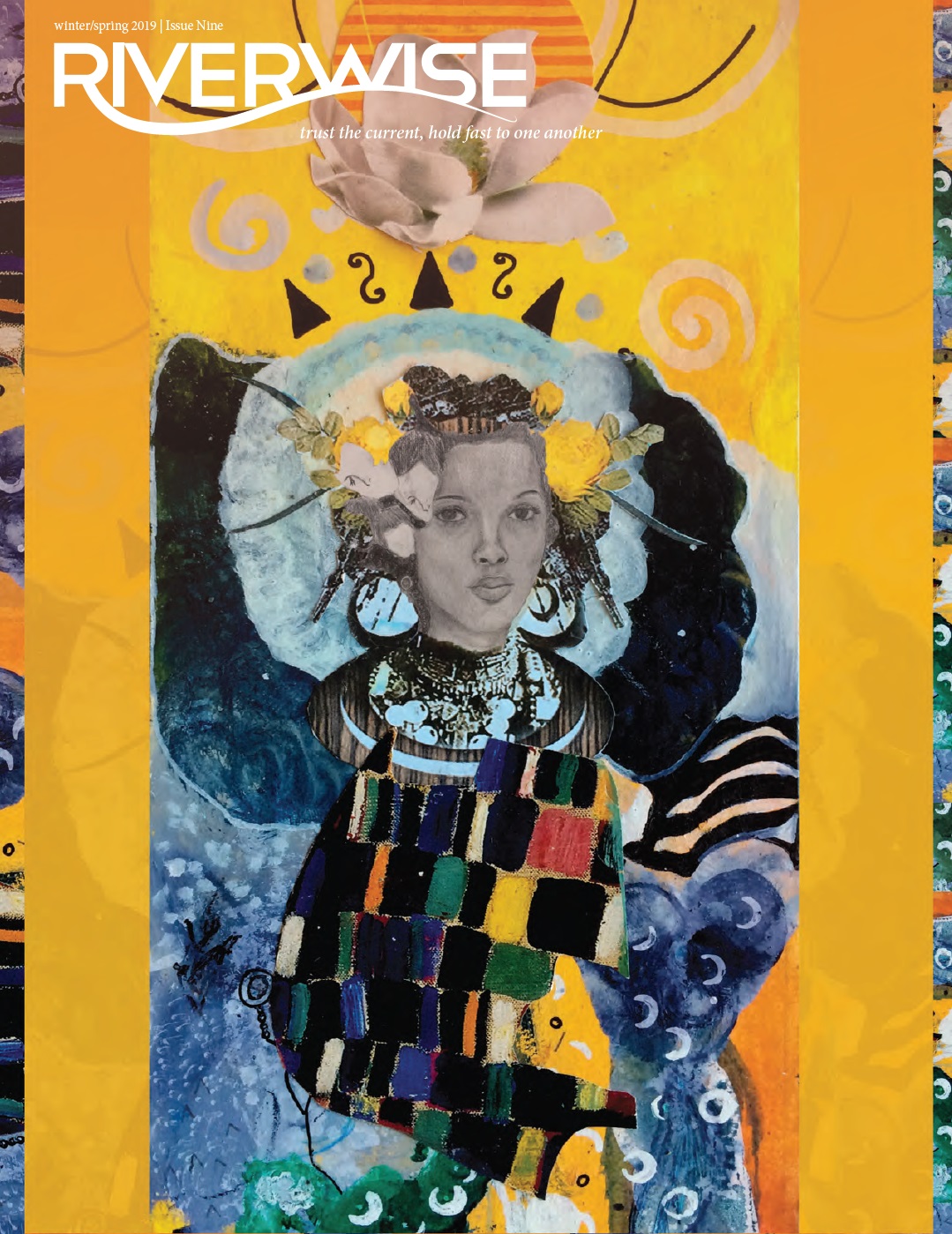Winter is giving way to spring. As the seasons shift, there is new energy emerging in our neighborhoods. Critical questions are taking on a sense of urgency as people are gathering to talk about the kind of futures we want for ourselves and our children.
Who is the city for? Can we develop people as we redevelop neighborhoods? What is the difference between our work and our job? What does it mean to live in a moment of great transition from old models of industrial production to creating sustainable ways of living?
These questions are intensifying community driven conversations as people consider the real possibility of the first new production plant in the city in nearly four decades. This issue of Riverwise features one such conversation on the eastside. The January 12 MLK Eastside Gathering emphasized collective, visionary thinking, revolving around concrete plans for self-determination. Several organizations, representing sustained neighborhood development, explored new economic models encouraging local production for local needs. People have been creating a foundation from which they can assert constraints on profit driven developers.
In contrast to this future-oriented gathering, the city-sponsored Fiat-Chrysler public meetings on March 13 and 14, also brought out large numbers of citizens, but with a very different tone. City officials attempted to steer the conversation down tired paths, but many people objected. Meeting in the UAW Local 7 union hall where, for many years, labor activists fought bravely for the rights of workers, old solutions and controlled discussions were not going to be tolerated. People have witnessed the ease with which corporations abandon communities for greater profits in other parts of the world. Community members are arguing for a different vision this time.
While corporate and city planners attempt to frame the conversation around jobs, people are thinking more critically about what this stage of development means. It’s apparent that, without a clear vision and political power, development will continue to benefit the few. The city administration has already committed land and tax breaks. Union leadership has negotiated benefits through collective bargaining. The Mayor boasted 6,500 new jobs will be brought to the city (remember that number).
The ever-present lure of jobs is meant to undermine any critical thinking about development. But out of necessity, people have been fostering just, inclusive, sustainable ways of living. The urban agriculture movement, as exemplified by DBCFSN (Detroit Black Community Food Security Network), has paved the way toward self-determination in our food system. Following their work, we are learning we can make decisions that start with our needs and decide on the values we want to embrace to grow our communities and the food we eat.
The energy democracy movement is taking root in Highland Park as well. Through the work with solar energy by groups like Soulardarity and the NEWCC (North End Woodward Community Coalition), we can see beyond the confines of corporate giants like DTE and decide not only how we want to light and heat our communities, but how we want to pay for it. Instead of soul-numbing jobs, people are creating opportunities for skills sharing and training in renewable resource sectors.
New language and thinking have also given way to the emergence of the Green New Deal. It allows us to reimagine what we should be producing in a time when sensitivity to the environment is critical for our survival.
These new ideas should compel us to ask difficult questions which advance the conversation around our future: Why are we still making gasoline-powered cars? Why can’t we create factories for building the infrastructure for high-speed magnetic rail? And then retool the same plant to make windmills and wind turbines using the concepts found and advanced by upcycling? Can we takeover the GM Poletown plant and retrofit it to produce parts, or to assemble parts, for a growing renewable energy sector? Can these plants be run and owned by the people who work there? Does the co-op system make for a better work environment and provide more equitable compensation for workers and their families? These questions should be front and center in our struggle to resolve our enduring contradictions. We can make decisions based on our actual needs instead of the needs of corporations, which care nothing for people or the planet.
Without this deliberate and shared dialogue, the ongoing battles for political and environmental justice manifest in our bodies and minds. We need to nurture, support and heal ourselves as we work toward new ways of being. In this issue we bring you some of our most thoughtful local healers to guide us. Lottie Spady helps us get ready for the change of seasons. She reminds us that one way toward self-determination is through our personal health—an attitude that spreads easily throughout our communities when practiced regularly. Sanaa Green offers a prescription for healing by listening and watching the world around us. She helps folks open up to the natural wonders that exist right in our midst. Both Spady and Green emphasize using the resources underneath our very feet to explore community healing and reimagine our surroundings.
Michael Betzold also appeals to our deep-seated connections to nature by telling us why the Belle Isle Grand Prix is an assault on a precious public park. Protecting our local natural resources from being violated is essential to maintaining a healthy community. The accompanying photos of birds inhabiting the island, taken by Detroit photographer Kenneth Smith, encourage us to ask what’s at stake as these safe spaces are challenged by the roar of auto racing.
Building community requires attending to our culture and history. Riverwise proudly presents the work of April Shipp, who dedicated three years to embroidering the names of over 4,000 African Americans lynched between 1865-1965. This effort to stitch an enduring public memory is our sacred site for this issue. Memory also circulates through the photo exhibit of Black Bottom, offering us a glimpse of African American life and culture in the historic district during the 1940s and 1950s. We thank Emily Kutil and Paige Watkins for their contributions to Riverwise and the Detroit historical record.
As we approach our tenth issue of Riverwise, we affirm our commitment to tell the stories emerging in our city that point the way to a better future for all. We need your help to continue these efforts. In addition to donations and subscriptions, we need your voice. Consider sending articles and ideas to keep the Riverwise current flowing. Articles, letters, photos, poetry, and artwork—all contribute to creating a narrative reflective of what is really going on in our communities. Send a check today, write a story, share a poem, give Riverwise to a friend. Together we are shaping the kind of world we all want.
Riverwise Editorial Team


